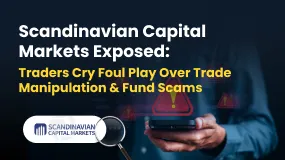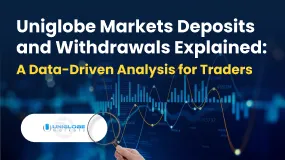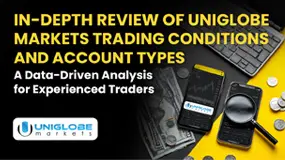简体中文
繁體中文
English
Pусский
日本語
ภาษาไทย
Tiếng Việt
Bahasa Indonesia
Español
हिन्दी
Filippiiniläinen
Français
Deutsch
Português
Türkçe
한국어
العربية
You need to know this if you are losing money in forex trading!
Abstract:If you’re losing money in forex trading, you’re far from alone: data from major brokers show that approximately 70 % to 80 % of retail Forex traders end up losing money. This article explores the most common reasons behind trading losses and provides actionable strategies to help you turn your losing streak into a learning opportunity rather than a financial drain.

If you‘re losing money in forex trading, you’re far from alone: data from major brokers show that approximately 70 % to 80 % of retail Forex traders end up losing money. This article explores the most common reasons behind trading losses and provides actionable strategies to help you turn your losing streak into a learning opportunity rather than a financial drain.
Lack of Discipline and Plan
Trading without a clear, written plan or letting emotions dictate decisions is one of the top reasons for failure. Discipline ensures you stick to predefined entry, exit, and risk rules, preventing impulsive trades driven by fear or greed.
Overleveraging
Leverage—while a powerful tool—can magnify losses as dramatically as it amplifies gains. Overleveraging occurs when you take on positions too large relative to your capital, increasing the risk of a margin call or account wipeout. Experienced traders often cap leverage at conservative ratios to protect against market volatility.
Poor Risk Management
The biggest risks in Forex are volatility and leverage; unmanaged, both can inflict rapid losses. Key elements of proper risk management include limiting risk per trade (often to 1 %–2 % of account balance), using stop‑loss orders, and controlling position sizes.
Emotional Trading
Trading psychology plays a critical role in success. Without emotional regulation, even the best strategies can fail as fear, greed, and impatience override rational analysis. Understanding how emotions affect your decisions is the first step toward mastering them.
Actionable Steps to Turn Losses into Learning
1. Implement Robust Risk Management
- Set Stop‑Loss Orders: Always define your maximum tolerable loss before entering a trade.
- Limit Risk per Trade: Risk no more than 1 %–2 % of your account on any single position.
- Adjust Position Size: Scale your trade size according to market volatility to avoid outsized drawdowns.
2. Use Demo Accounts Wisely
Demo trading provides a risk-free environment to hone strategies, learn platform mechanics, and practice discipline. Use it to experiment with different setups, test stop‑loss placement, and build muscle memory, just as you would in live markets. WikiFX offers demo trading competitions, which are free to participate in and helpful for those traders who want to practice before joining real forex trading.
3. Develop and Follow a Trading Plan
A solid trading plan outlines your market analysis methods, entry/exit criteria, risk parameters, and daily routines. Treat Forex trading as a business: research markets thoroughly, set realistic goals, and review performance regularly.
4. Download WikiFX to find decent brokers
WikiFX contains details of more than 50,000 global forex brokers, which gives you a huge advantage when seeking the best forex brokers. If you want to know more information about the reliability of certain brokers, you can open our website (https://www.WikiFX.com/en).
Conclusion
Losing money in Forex trading is a rite of passage—what matters is how you respond. By recognizing the real odds, avoiding common pitfalls, and adopting disciplined, data-driven practices, you can shift from the majority of losing traders into the successful minority. With robust risk management, a solid trading plan, emotional control, and ongoing learning, youll turn every loss into an opportunity for growth.

Disclaimer:
The views in this article only represent the author's personal views, and do not constitute investment advice on this platform. This platform does not guarantee the accuracy, completeness and timeliness of the information in the article, and will not be liable for any loss caused by the use of or reliance on the information in the article.
Read more

Scandinavian Capital Markets Exposed: Traders Cry Foul Play Over Trade Manipulation & Fund Scams
Does Scandinavian Capital Markets stipulate heavy margin requirements to keep you out of positions? Have you been deceived by their price manipulation tactic? Have you lost all your investments as the broker did not have risk management in place? Were you persuaded to bet on too risky and scam-ridden instruments by the broker officials? These are some burning issues traders face here. In this Scandinavian Capital Markets review guide, we have discussed these issues. Read on to explore them.

Uniglobe Markets Deposits and Withdrawals Explained: A Data-Driven Analysis for Traders
For any experienced trader, the integrity of a broker isn't just measured in pips and spreads; it's fundamentally defined by the reliability and transparency of its financial operations. The ability to deposit and, more importantly, withdraw capital seamlessly is the bedrock of trust between a trader and their brokerage. When this process is fraught with delays, ambiguity, or outright failure, it undermines the entire trading relationship. This in-depth analysis focuses on Uniglobe Markets, a broker that has been operational for 5-10 years and presents itself as a world-class trading partner. We will move beyond the marketing claims to scrutinize the realities of its funding mechanisms. By examining available data on Uniglobe Markets deposits and withdrawals, we aim to provide a clear, evidence-based picture for traders evaluating this broker for long-term engagement. Our investigation will be anchored primarily in verified records and user exposure reports to explain the Uniglobe Mar

In-Depth Review of Uniglobe Markets Trading Conditions and Account Types – An Analysis for Traders
For experienced traders, selecting a broker is a meticulous process that extends far beyond headline spreads and bonus offers. It involves a deep dive into the fundamental structure of a broker's offering: its regulatory standing, the integrity of its trading conditions, and the flexibility of its account types. Uniglobe Markets, a broker with an operational history spanning over five years, presents a complex case study. It offers seemingly attractive conditions, including high leverage and a diverse account structure, yet operates within a regulatory framework that demands intense scrutiny. This in-depth analysis will dissect the Uniglobe Markets trading conditions and account types, using data primarily sourced from the global broker inquiry platform, WikiFX. We will explore the Uniglobe Markets minimum deposit, leverage, and account types to provide a clear, data-driven perspective for traders evaluating this broker as a potential long-term partner.

KEY TO MARKETS Review: Are Traders Facing Withdrawal Delays, Deposit Issues & Trade Manipulation?
Did your deposits in KEY TO MARKETS’ forex trading fail to reflect despite numerous follow-ups with the broker? Are you facing margin lock up and withdrawal issues due to stuck limit orders? Do you find losses due to wide spreads on the KEY TO MARKETS login? Similar issues have been expressed by many traders online. In this KEY TO MARKETS review article, we will take a close look at the complaints. Read on!
WikiFX Broker
Latest News
GCash Rolls Out Virtual US Account to Cut Forex Fees for Filipinos
The 350 Per Cent Promise That Cost Her RM604,000
INZO Commission Fees and Spreads Breakdown: A 2025 Data-Driven Analysis for Traders
Garanti BBVA Securities Exposed: Traders Report Unfair Charges & Poor Customer Service
"Just 9 More Lots": Inside the Endless Withdrawal Loop at Grand Capital
Private payroll losses accelerated in the past four weeks, ADP reports
Core wholesale prices rose less than expected in September; retail sales gain
Consumer confidence hits lowest point since April as job worries grow
CFTC Polymarket Approval Signals U.S. Relaunch 2025
MH Markets Commission Fees and Spreads Analysis: A Data-Driven Breakdown for Traders
Currency Calculator




